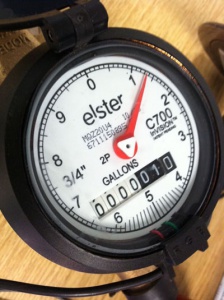So you’ve decided to share household bills in your new accommodation. Everything’s going great until your landlord asks you for a water meter reading. You weren’t ready for this and, typically, have no idea how to do it.
Reading your water meter is actually pretty straight forward, but what’s most important, especially when you split bills yourselves, is keeping track of the numbers that glare back at you.
You should get into the practise of reading your meter every month or two in order to understand how much you’re using, and usually you’ll need to do a meter reading when you first move in and then again when you move out.
For those who are stuck and wondering why it’s so important that you jot down a few numbers, here’s our advice.
Step 1: Find the meter
Meters are generally located in one of three places: On the path outside your building, in a box on the outside wall, or inside the house either under the sink or in the basement. If you’re struggling to find it, it might be a good idea to give your landlord a call.
Step 2: Get a reading so you can split the bills
Once you’ve established its location, all you need to do is record the numbers. These tell you how much cubic meters (1,000 litres) of water you’ve used and your bill will be calculated based on this number. When you share household bills, it’s important to keep on top of how much you use to avoid overspending.
To give you an idea of how much water is used, then 1000 litres of water is equivalent to:
14 washing loads
28 showers
33 dishwasher loads
111 toilet flushes
Step 3: Split the bills evenly
If you’re already using Glide then just send us the reading and we will do this for you, otherwise you’ll need to consider the maths if you share household bills and other student broadband deals bills.
However, by keeping on top of your monthly use you can start to get a more accurate estimate which makes budgeting easier. That means you can definitely afford an extra few minutes in the shower (or that extra pint tonight)!


